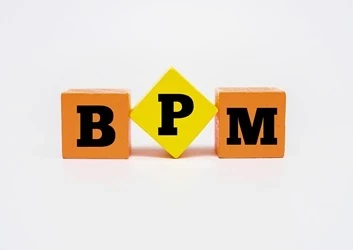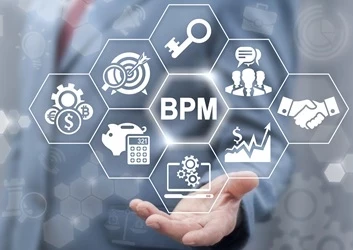Vinay Mummigatti is an UnitedHealth Group employee but the views published in his articles are his own and they do not reflect those of UnitedHealth Group or its affiliates.
Why BPM programs need a holistic approach from process excellence through automation and change management
|
Business process management has proven to be a great enabler for rapid and outcome oriented business transformation. But most process led business transformation initiatives are highly complex and bring a unique set of challenges that can lead to undesirable outcomes. The process transformation journey starts with process excellence initiatives and once we establish a baseline, we move on to implementing process automation using a BPM technology that can help us achieve faster throughput, operational efficiencies and on-going process monitoring and optimization. For most large enterprises, establishing a commonly acceptable process for its operations is the first challenge. The cultural landscape, global spread of teamsand multiple mergers & acquisitions, all contribute to diverse versions of the same process and also bring varying levels of process maturity. Aligning all the teams to agree to a common process which has standard roles, activities, outcomes and measures of success or KPI’s is a major journey in itself. |
Most manufacturing, retail, and consumer goods companies relied on ERP systems to solve this problem by implementing process blue prints that came with the ERP implementations. However, the services companies mainly involved with Banking & Finance, Healthcare and Insurance could not follow this path simple because their processes were so unique to individual enterprises and the "one size fits all" offered by ERP systems did not work. Core processes across front office and back office are heavily dependent on knowledge workers, compliance and regulatory rules and transaction systems.
A plethora of legacy systems built by financial services companies to handle their core transactions add to the complexity. Hence, before we embark on any process automation initiative, it is of utmost importance to establish process models that are commonly acceptable, aligned to strategic goals and legacy investments with measurable KPI’s.
A reasonable level of re-engineering is always helpful to gain the benefits from automation and to achieve desired business goals. But sometimes over-engineering can leave the BPM initiative paralyzed due to either lengthy cycles of business value realization or inability to get user alignment.
Having taken the first step of establishing process models and aligning them to core transformation agenda, our next step is to ensure that we pick the right BPM platform, establish an implementation roadmap that delivers rapid demonstrable business value with substantial business participation. We need to account for the key characteristics of BPM implementations that differentiate BPM programs from many other technology initiatives.
A few notable ones are :
- Most BPM programs focus on transformation and change, resulting in benefits attached to revenue, customer experience, compliance and cost drivers. That means BPM needs to have business-owned program management with direct control of scope + design + change management + adoption. IT teams take more of a support role to deliver services as needed.
- Most BPM platforms offer core capabilities and out of the box functionalities around process/rules modeling, work management and reporting. The solution scope and design must maximize the use of out-of-box BPM Platform capabilities to maximize ROI and time to market.
- BPM implementations often bring dramatic changes in the operational and process models with new roles and organization structure. Business teams must plan and implement organizational change management very effectively with deep focus on user participation, education and motivation.
- BPM platforms are chosen over other traditional technologies mainly due to the promise of agility, business user friendliness and adaptability to changing business policies. To realize this promise the solution design and architecture must account for reuse, business user control of policies and real time change.





















